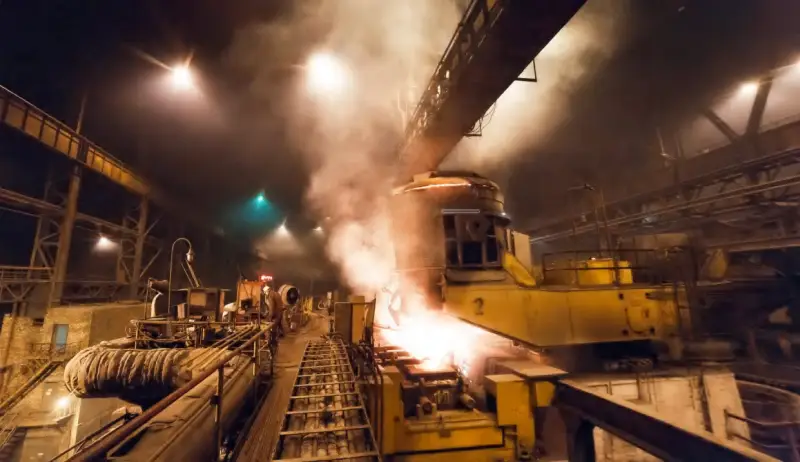When it comes to illuminating spaces with high temperatures, finding the right lighting solution can be a daunting task. High bay lighting for high temperature applications requires careful consideration of various factors, such as durability, efficiency, and performance. In this comprehensive guide, we’ll explore the world of high temperature lights, discuss the challenges of extreme temperature environments, and provide you with the knowledge to make informed decisions when selecting lighting for your unique needs.
Understanding High Temperature Environments
Before diving into the specifics of high bay lighting, let’s take a moment to understand what constitutes a high temperature environment. These spaces, often found in industrial settings, can include:
– Manufacturing plants with heat-generating machinery
– Foundries and forges with extreme ambient temperatures
– Commercial kitchens with high-heat cooking equipment
– Outdoor locations exposed to direct sunlight and high temperatures
In these environments, temperatures can soar well above the comfort level of standard lighting fixtures, making it essential to choose heat-resistant lights that can withstand the demands of these harsh conditions.
The Importance of Heat Resistant Lights
When exposed to high temperatures, conventional lighting fixtures can experience a range of issues, such as reduced lifespan, decreased luminosity, and even complete failure. That’s where heat resistant lights come into play. These specially designed fixtures are built to withstand extreme temperature environments, ensuring reliable and consistent performance.
Some key features of heat resistant lights include:
- Durable materials: High temperature lights are constructed using materials that can endure high heat, such as ceramic, glass, and high-grade plastics.
- Efficient cooling: These fixtures often incorporate advanced cooling mechanisms, like heat sinks and ventilation systems, to dissipate excess heat and maintain optimal operating temperatures.
- Robust seals: To protect against dust, moisture, and other environmental factors, heat resistant lights feature robust seals that prevent contaminants from entering the fixture.
By investing in high bay lighting designed for high temperature applications, you can ensure that your space remains well-lit, safe, and productive, even in the most demanding conditions.
Choosing the Right High Bay Lighting
Now that we’ve established the importance of heat resistant lights let’s explore the key considerations when selecting high bay lighting for your high temperature application.
Lumen Output and Efficiency
One of the primary factors to consider is the lumen output and efficiency of the lighting fixture. High bay lights with higher lumen outputs can provide better illumination for larger spaces, while more efficient fixtures can help reduce energy consumption and operating costs. When evaluating options, look for lights with a high lumen-per-watt ratio, which indicates a balance between brightness and energy efficiency. Read more about The brilliance of LED high temperature high bay lighting here.
Color Temperature and CRI
The color temperature and color rendering index (CRI) of a high bay light can significantly impact the visual comfort and clarity within your space. For high temperature environments, consider choosing lights with a cooler color temperature (3000-4000K) to promote alertness and visibility. Additionally, a high CRI (80+) ensures that colors are accurately rendered, which can be crucial for tasks requiring color accuracy, such as quality control inspections.
Mounting Options
High bay lighting for high temperature applications comes in various mounting options, including suspended, surface-mounted, and recessed fixtures. Consider the layout and design of your space when selecting mounting options, and ensure that the fixtures are easily accessible for maintenance and repairs.
Dimming and Control
In some high temperature environments, the ability to dim or control the lighting can provide added flexibility and energy savings. Look for high bay lights that are compatible with dimming systems or intelligent control solutions, such as occupancy sensors or daylight harvesting, to optimize your lighting based on real-time needs.
FAQs
- Can LED high bay lights be used in high temperature applications?
Yes, many LED high bay lights are designed to withstand high temperatures, making them an excellent choice for extreme temperature environments. Look for LED fixtures with robust heat sinks and thermal management systems.
- How long do high temperature lights typically last?
The lifespan of high temperature lights varies depending on the specific product and application. However, high-quality heat resistant lights can last up to 50,000 hours or more, significantly outlasting conventional lighting options.
- Are high bay lights for high temperature applications more expensive?
While heat resistant high bay lights may have a higher upfront cost compared to standard fixtures, their increased durability, efficiency, and longer lifespan often result in lower long-term costs and a better return on investment.
- Can heat-resistant lights be used in outdoor applications?
Yes, many heat-resistant lights are suitable for outdoor use, provided they have the appropriate IP rating to protect against dust, moisture, and other environmental factors. Always check the manufacturer’s specifications to ensure the fixture is suitable for your specific outdoor application.
 |
In Summary
Illuminating spaces with high temperatures requires careful consideration and the use of specialized high bay lighting designed to withstand extreme conditions. By understanding the challenges of high temperature environments, the importance of heat resistant lights, and the key factors to consider when selecting lighting solutions, you can make informed decisions that ensure optimal performance, efficiency, and safety in your space.
When exploring high bay lighting options for your high temperature application, remember to prioritize durability, efficiency, and quality. By investing in the right heat resistant lights, you can create a well-lit, productive environment that stands up to the demands of even the most challenging conditions.
[gravityform id=”1″ title=”true” description=”true”]
